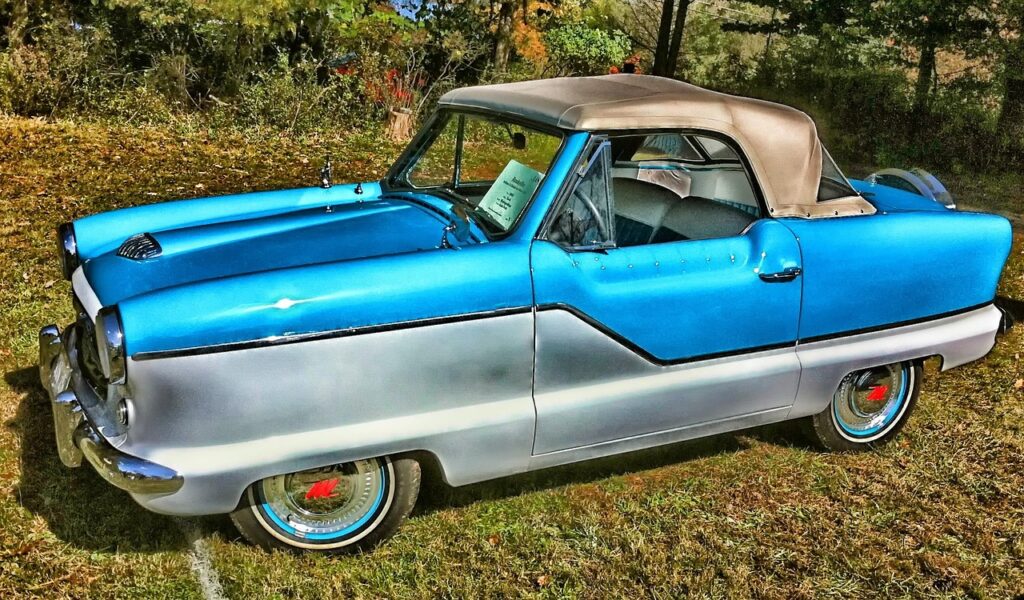
The roar of a V8, the unmistakable lines of a classic American machine, and the sheer thrill of raw power — muscle cars have long held a special, almost sacred, place in the hearts of automotive enthusiasts. Iconic names like the Ford Mustang, Dodge Challenger, and Chevrolet Chevelle immediately spring to mind, vehicles that didn’t just define an era of American automotive excellence but etched themselves into the very fabric of car culture. Their uncompromising blend of audacious styling, blistering performance, and a rebellious spirit continues to resonate with undeniable force, even decades after their glorious heyday. These machines weren’t just about getting from point A to point B; they were about the journey, the statement, and the pure, unadulterated joy of the drive.
Yet, as the baby boomer generation, traditionally the largest and most influential group of collectors, begins to transition out of active collecting, intriguing shifts are occurring within the classic car market. While the undisputed flagship models – the million-dollar Hemi ‘Cudas and Boss 429 Mustangs – will undoubtedly continue to command top dollar and remain fiercely prized, a fascinating re-evaluation is taking place. This pivotal moment presents a unique opportunity, as the spotlight begins to swing towards lesser-known muscle cars, those once overlooked or overshadowed, now poised for significant appreciation. For savvy collectors and astute investors, the timing couldn’t be better to dive into this evolving landscape.
Our journey today is precisely about unearthing these hidden gems, celebrating those options that have historically flown under the radar but are now rapidly gaining the recognition they always deserved. To bring you this carefully curated list, we didn’t rely on speculation. Instead, a data-focused approach was meticulously employed, utilizing sophisticated tools like Hagerty’s Price Tool and diligently tracking historical sale trends from Classic.com. This rigorous methodology allowed us to cut through the noise, providing a clear, evidence-based picture of market momentum and definitively revealing which models are currently gaining serious traction among a new wave of collectors. These vehicles, once considered mere supporting acts, are proving that the muscle car market is dynamic, full of surprises, and ripe with opportunities.
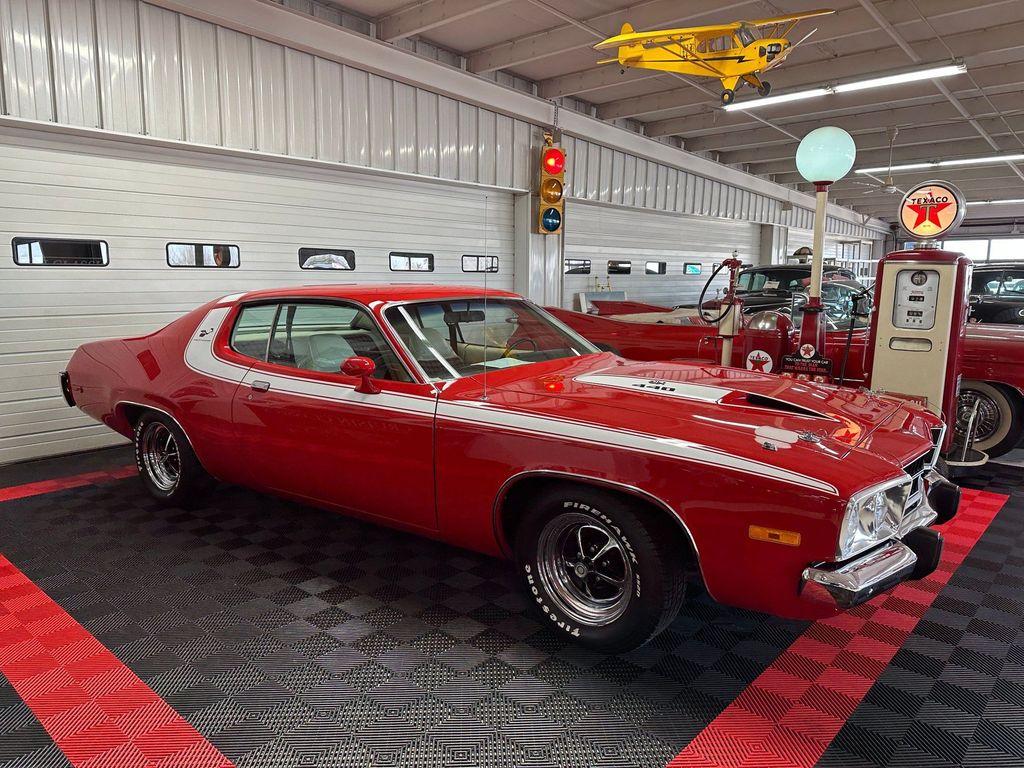
1. **Plymouth Duster: A Modest Mopar on the Rise** For years, the 1970 Plymouth Duster humbly operated in the colossal shadow cast by Mopar legends like the fearsome Hemi ‘Cuda, a vehicle often reverently referred to as the Mopar holy grail. The Duster was initially conceived and marketed as a more approachable, affordable alternative to its pricier and more extravagant siblings. Despite its modest positioning, it was no slouch, coming equipped with a respectable 340-cubic-inch V8 engine that capably produced 275 horsepower, offering a compelling blend of performance and value that made it a favorite among those who appreciated a potent punch without breaking the bank. It truly epitomized the spirit of accessible American muscle, delivering thrills without the hefty price tag associated with its top-tier counterparts.
However, as with many compelling stories, times have unequivocally changed, and the Duster’s quiet brilliance is finally being broadcast to a wider audience. Current market data, painstakingly compiled by Hagerty, now shows a tangible and impressive resurgence in its value, with well-kept versions experiencing an increase of approximately 5.2%. This upward trend is particularly evident at the higher end of the spectrum, where pristine, low-mileage examples are now aggressively nearing the $100,000 mark at auction, a testament to their newfound desirability. In a remarkable shift, the average sale price for a Duster, which lingered around a mere $33,000 in 2021, has dramatically surged to exceed $50,000 today. This undeniable appreciation, coupled with its inherent performance credentials, emphatically proves that even the so-called “underdog Mopars” possess significant muscle car investment potential in today’s rapidly evolving and increasingly diverse collector’s market. The Duster is no longer just an affordable entry point; it’s a shrewd investment.
Car Model Information: 1973 Plymouth Duster
Name: Plymouth Duster
Caption: 1970 Plymouth Duster 340
Manufacturer: Plymouth (automobile)
Production: 1969–1976
ModelYears: 1970–1976
Assembly: Hamtramck, Michigan,Commerce, California,Fenton, Missouri,Windsor, Ontario
Designer: Milt Antonick and Neil Walling
Class: Compact car
BodyStyle: coupe
Layout: Front-engine, rear-wheel-drive layout
Platform: Chrysler A platform
Related: Plymouth Valiant,Dodge Dart
Engine: {{convert,198,cuin,L,1,abbr=on,Chrysler Slant 6 engine,Straight-six engine
Abbr: on
Transmission: manual transmission,4-speed manual,TorqueFlite
Wheelbase: 108.0 in
Predecessor: Plymouth Barracuda
Successor: Plymouth Volare,Plymouth Gran Fury
Categories: 1970s cars, All Wikipedia articles needing clarification, All articles with dead YouTube links, Articles with dead YouTube links from February 2022, Articles with short description
Summary: The original Plymouth Duster is a semi-fastback two-door coupe version of the compact-sized Plymouth Valiant automobile that was marketed by Plymouth in the U.S. from 1970 until 1976 model years.
Get more information about: Plymouth Duster
Buying a high-performing used car >>>
Brand: Plymouth Model: Duster
Price: $28,500 Mileage: 77,403 mi.
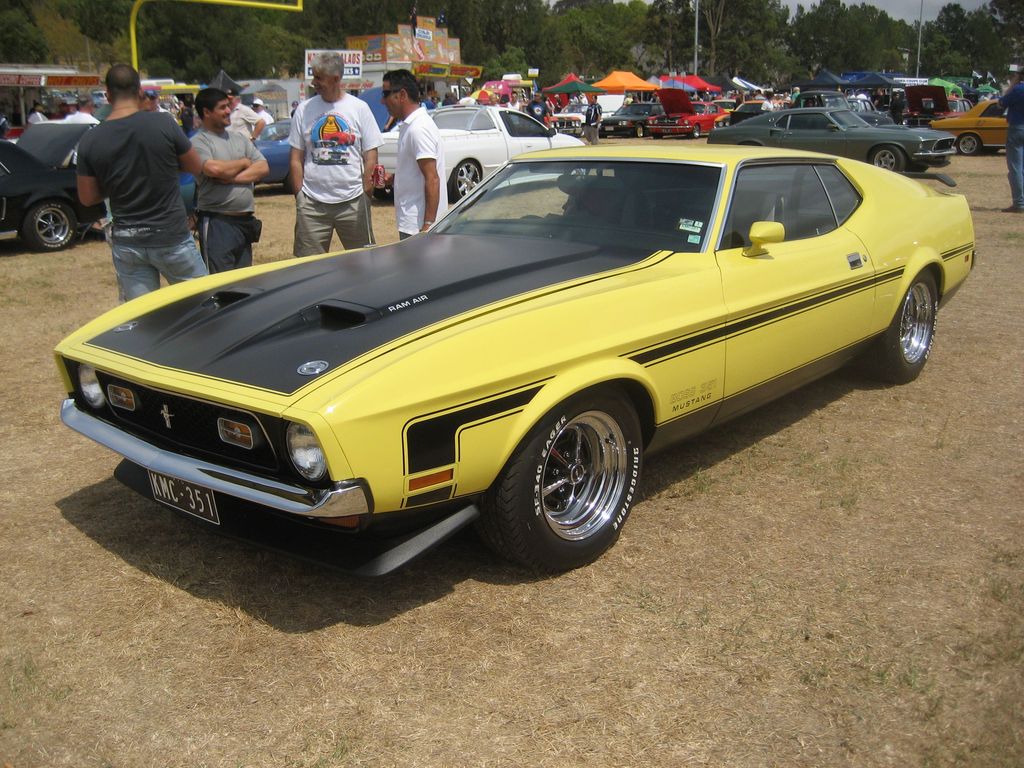
2. **Ford Mustang Boss 351: The Forgotten Boss** Within the illustrious lineage of Ford’s iconic Mustang, particularly among the performance-bred “Boss” models, the 1971 Mustang Boss 351 has long found itself sitting somewhat unfairly in the shadows of its more celebrated siblings: the legendary Boss 302 and the monstrous Boss 429. These other models often garnered the lion’s share of attention and accolades, leaving the Boss 351 as a somewhat overlooked, albeit equally potent, contender. Yet, this particular iteration, a formidable machine featuring a potent 351-cubic-inch V8 engine delivering a robust 330 horsepower, is now, without question, earning the profound respect and admiration it has always rightfully deserved from a growing legion of enthusiasts and collectors.
The financial trajectory of the Boss 351 beautifully reflects this overdue recognition. Values that, for a period, regrettably dipped below the $60,000 threshold have since experienced a powerful resurgence, now confidently surging back above the $80,000 mark. According to detailed reports from Hagerty, ‘Excellent’ condition examples of this car are showing impressive value gains of approximately 5.9%, indicating a strong and steady climb. Furthermore, the market has seen a rare, exceptionally well-optioned example recently fetch a staggering price exceeding $134,000 at auction, underscoring its escalating appeal. The Boss 351 occupies a truly unique and significant position in Mustang history as the final true “Boss” Mustang, a fact that, when combined with its unassailable performance credentials and inherent rarity, is powerfully helping it emerge from years of relative obscurity directly into the vibrant spotlight of the collector’s market. This is especially true among the most discerning and knowledgeable Ford enthusiasts who understand its historical importance.
Car Model Information: 2024 RAM 1500 Laramie
Name: Mustang (first generation)
Caption: 1965 Ford Mustang
Aka: Ford T5 (Germany)
Manufacturer: Ford Motor Company
Assembly: Unbulleted list
Production: March 1964 – June 1973
ModelYears: 1965–1973
Class: Unbulleted list
BodyStyle: Unbulleted list
Layout: Front-engine, rear-wheel drive layout
Designer: Gale Halderman
Related: Unbulleted list
Successor: Ford Mustang (second generation)
Categories: 1970s cars, All Wikipedia articles written in American English, All articles with unsourced statements, Articles with short description, Articles with unsourced statements from January 2020
Summary: The first-generation Ford Mustang was manufactured by Ford from March 1964 until 1973. The introduction of the Mustang created a new class of automobiles known as pony cars. The Mustang’s styling, with its long hood and short deck, proved wildly popular and inspired a host of competition.
It was introduced on April 17, 1964, as a hardtop and convertible, with the fastback version following in August 1964. Upon introduction, the Mustang, sharing its platform with the Falcon, was slotted into the compact car segment.
The first-generation Mustangs grew in overall dimensions and engine power with each revision. The 1971 model featured a drastic redesign. After an initial surge, sales steadily declined, and Ford began working on a new generation Mustang. With the onset of the 1973 oil crisis, Ford was prepared, having already designed the smaller Mustang II for the 1974 model year. This new car shared no components with preceding models.
Get more information about: Ford Mustang (first generation)
Buying a high-performing used car >>>
Brand: Ford Model: Mustang Boss 351
Price: $37,798 Mileage: 34,409 mi.

3. **AMC AMX: A Rare Breed with Rising Interest** American Motors, a brand often regarded as the spirited underdog of the muscle car era, consistently defied conventions and carved out its own unique niche. The 1969 AMC AMX perfectly embodies this maverick spirit. While it may not have boasted the sheer, unbridled raw performance figures that characterized some of the behemoth muscle cars churned out by the “Big Three” (GM, Ford, Chrysler), the AMX is now definitively turning heads precisely because of its undeniable uniqueness, distinctive charm, and inherent rarity. For far too long, this compelling two-seater, powered by a capable 290-cubic-inch V8 engine that produced 225 horsepower, was severely underestimated, largely overshadowed by its more mainstream competitors.
However, the tide has decidedly turned, and the AMX is now experiencing a robust and well-deserved surge in value, with growth rates of 6% or even more, depending critically on the specific condition and the engine option specified. Intriguingly, data reveals that AMXs equipped with the smaller V8 engines are, in fact, appreciating at a quicker pace than their more powerful 390-cubic-inch siblings, highlighting a nuanced shift in collector preference. Given AMC’s enduring “underdog” status and the AMX’s unmistakably distinctive two-seat design, which truly set it apart from virtually every other muscle car of its time, collectors are finally beginning to fully appreciate its unique allure. As truly rare examples continue to surface, they are increasingly commanding highly competitive prices on the auction circuit, signaling a powerful re-evaluation of AMC’s contributions to American performance history. This isn’t just a car; it’s a piece of unique automotive heritage now finding its rightful place.
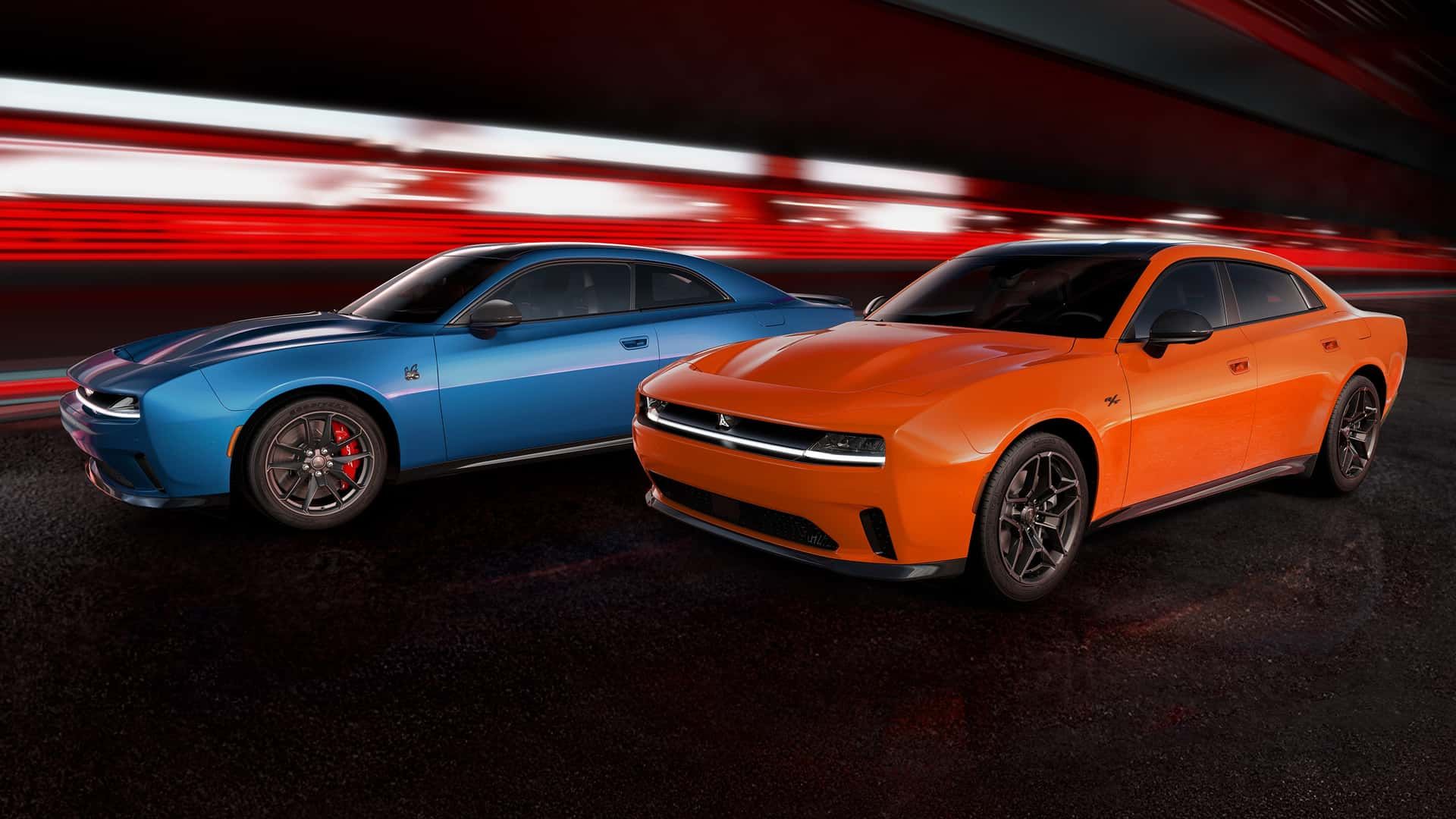
4. **Dodge Dart GTS: Quietly Surging in Value** In the vast and storied catalog of Mopar performance, the 1969 Dodge Dart GTS has, for a significant period, been somewhat overlooked, often relegated to a supporting role in favor of its more famously flamboyant and larger siblings, the Charger or the Challenger. Yet, this unassuming powerhouse is now rapidly emerging as a genuinely hot item within the collector community, its star steadily rising in both popularity and market value. This compelling model, powered by a robust 383-cubic-inch V8 engine that eagerly generated 330 horsepower, represents a potent blend of compact agility and serious muscle, a combination that is proving increasingly irresistible to a new generation of enthusiasts seeking performance without the bulk.
The market’s enthusiastic response to the Dart GTS is clearly reflected in its valuation increases. Hagerty reports an impressive surge in value, with ‘Concours’ condition examples appreciating by as much as 15%. This substantial leap is further supported by average sales prices, which have climbed from under $45,000 in 2020 to now confidently exceeding $61,000, illustrating a consistent and strong upward trajectory. The Dart GTS masterfully delivers potent performance encapsulated within a remarkably compact package, positioning it as an incredibly compelling option for discerning enthusiasts and serious collectors alike. Its burgeoning desirability serves as a powerful testament to the subtly shifting tastes within the vibrant muscle car community, where once-hidden gems and underestimated powerhouses are finally being unearthed and celebrated for their intrinsic merits and thrilling capabilities. This is a compact car that punches well above its weight class.
Car Model Information: 1972 Dodge Dart Swinger
Name: Dodge Dart
Caption: 1966 Dodge Dart GT 2-door hardtop
Manufacturer: Dodge
Production: 1959–1976 (US market)
1969-1981 (Brazil)
AlternativeName: Charger (Brazil)
ModelYears: 1960–1976 (US market)
1970-1981 (Brazil)
Class: Full-size
Layout: FR layout
Predecessor: Dodge Coronet#Fourth generation (1957–1959)
Related: Plymouth Valiant,Chrysler Valiant,Dodge Phoenix
Successor: Dodge Aspen,Dodge Diplomat,Talbot Tagora
Categories: 1970s cars, All articles with unsourced statements, Articles with short description, Articles with unsourced statements from December 2023, Articles with unsourced statements from May 2025
Summary: The Dodge Dart is a line of passenger cars produced by Dodge from the 1959 to 1976 model years in North America, with production extended to later years in various other markets.
The production Dodge Dart was introduced as a lower-priced full-size model in 1960 and 1961, but became a mid-size car for one model year for 1962, and was then reduced to a compact for two generations, from 1963 to 1976.
Chrysler had first used ‘Dart’ name plates on two Italian styled show cars, in 1956 and 1957, before it became a Dodge model name. The Dart nameplate was resurrected for a Fiat-derived compact car that was introduced in 2012.
Get more information about: Dodge Dart
Buying a high-performing used car >>>
Brand: Dodge Model: Dart
Price: $19,999 Mileage: 40,424 mi.
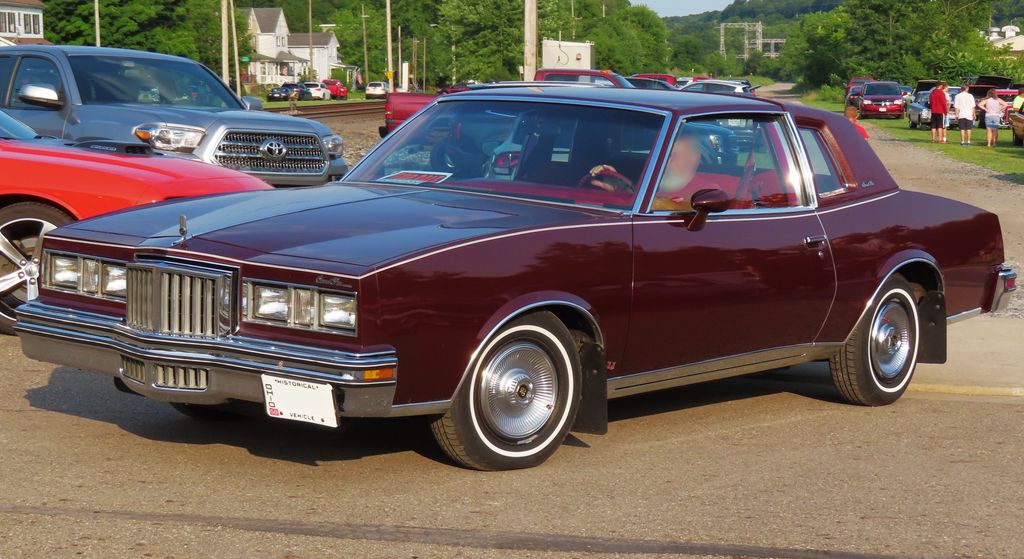
5. **Pontiac Grand Prix J: Luxury Meets Muscle** The 1970 Pontiac Grand Prix J has historically occupied a somewhat ambiguous position in the automotive world, often perceived more as a luxurious personal coupe rather than a true, unadulterated muscle car. Its sophisticated styling and comfortable amenities initially nudged it into a different category than its more overtly performance-focused brethren. However, this nuanced perception is undergoing a profound and well-deserved transformation, as the Grand Prix J is now earning newfound respect precisely for its unexpected dual nature. With a formidable 400-cubic-inch V8 engine residing beneath its elegant hood, capable of unleashing a substantial 350 horsepower, there’s no denying that the Grand Prix J possesses the inherent power and capability to more than hold its own when the throttle hits the floor or when challenged on the drag strip. It truly offers a compelling blend of opulence and raw power.
The market is unequivocally reflecting this growing appreciation for its unique attributes. Data from Classic.com vividly illustrates a significant upward trend in its average sale prices, which have impressively risen from under $20,000 in 2022 to now hovering robustly near $32,000. While some lower-condition models might show minor fluctuations, ‘Excellent’ condition examples have demonstrated a remarkable appreciation of 10.9%, signaling strong collector confidence. This fascinating shift in valuation powerfully underscores a burgeoning interest in what can best be described as “muscle-luxury hybrids” — vehicles that masterfully blend the plush comfort and refined styling of a grand tourer with the exhilarating, uncompromised performance of a true muscle machine. These dual-purpose classics are proving particularly attractive to a younger demographic of collectors who seek versatility, desiring a vehicle that offers both a comfortable cruising experience and the thrilling capability to unleash serious horsepower, making the Grand Prix J a truly compelling acquisition.
Car Model Information: 2021 Dodge Challenger R/T Scat Pack
Name: Pontiac Grand Prix
Caption: 2004–2008 Pontiac Grand Prix
Manufacturer: Pontiac (automobile)
ModelYears: 1962–2008
Class: Personal luxury car
Layout: Front-engine, rear-wheel-drive layout
Successor: Pontiac G8
Platform: unbulleted list
Categories: 1960s cars, 1970s cars, 1980s cars, 1990s cars, 2000s cars
Summary: The Grand Prix is a line of automobiles produced by the Pontiac Division of General Motors from 1962 until 2002 as coupes and from 1989 through 2008 model years as four-door sedans.
First introduced as a full-size performance coupe for the 1962 model year, the model repeatedly varied in size, luxury, and performance over successive generations. The Grand Prix was the most expensive coupe Pontiac offered until the 1970s, when the Bonneville Brougham and the Firebird Trans Am became more exclusive; the Grand Prix moved into the intermediate personal luxury car and later the mid-size market segments.
All Grand Prixs from 1962 through 1972 were pillarless hardtops (except for the 1967 convertible).
Get more information about: Pontiac Grand Prix
Buying a high-performing used car >>>
Brand: Pontiac Model: Grand Prix J
Price: $37,986 Mileage: 20,124 mi.
6. **AMC Javelin AMX: AMC’s Forgotten Muscle Star Shines Bright**The year 1971 brought us the AMC Javelin AMX, a true standout that, for far too long, remained an unsung hero in the muscle car pantheon. This magnificent machine, often regrettably overlooked, is finally gaining the serious traction it has always deserved among collectors. Sporting a robust 360-cubic-inch V8 engine that unleashed a potent 285 horsepower, the Javelin AMX possessed both the heart and the aggressive styling to go head-to-head with its more celebrated rivals. It stands as a testament to American Motors’ distinctive approach, blending bold aesthetics with commendable performance in a package that truly sets it apart.
What’s truly exciting is the significant market appreciation this once-forgotten gem is now experiencing. Data indicates that values for ‘Excellent’ examples of the 1971 Javelin AMX have surged by an impressive 9.3%. Furthermore, for those lucky enough to possess versions equipped with the even larger 401 engines, the climb has been even steeper, with top-tier cars witnessing an astounding value increase of up to 26.5%. This dramatic upward trend emphatically highlights a burgeoning recognition of AMC’s contributions to the muscle car narrative, proving that its “underdog” status actually enhances its unique appeal in today’s diverse collector landscape.
The Javelin AMX’s aggressive design and solid performance credentials have undeniably boosted its collector appeal, especially as enthusiasts delve deeper into the rich tapestry of automotive history. As AMC’s legacy continues to be meticulously re-evaluated, this particular model is increasingly viewed not just as a piece of history, but as a genuinely valuable and refreshingly unique alternative to the more mainstream muscle cars. It offers a distinct blend of rarity, spirited performance, and a compelling backstory that makes it an incredibly wise and rewarding acquisition for any discerning enthusiast looking for something truly special.
Car Model Information: 2021 Dodge Challenger R/T Scat Pack
Name: AMC Javelin
Caption: 1971 AMC Javelin SST
Manufacturer: American Motors Corporation
Aka: unbulleted list
Production: 1967–1974
ModelYears: 1968–1974
Assembly: unbulleted list
Designer: Dick Teague
Class: unbulleted list
BodyStyle: hardtop
Layout: Front-engine, rear-wheel drive layout
Platform: AMC’s “junior” cars
Predecessor: Rambler Marlin
Categories: 1970s cars, AMC vehicles, All articles that may contain original research, All articles with dead external links, All articles with unsourced statements
Summary: The AMC Javelin is an American front-engine, rear-wheel-drive, two-door hardtop automobile manufactured by American Motors Corporation (AMC) across two generations, 1968 through 1970 and 1971 through 1974 model years. The car was positioned and marketed in the pony car market segment.
Styled by Dick Teague, the Javelin was available in a range of trim and engine levels, from economical pony car to muscle car variants. In addition to manufacture in Kenosha, Wisconsin, Javelins were assembled under license in Germany, Mexico, Philippines, Venezuela, as well as Australia – and were marketed globally. American Motors also offered discounts to U.S. military personnel, and cars were taken overseas.
The Javelin won the Trans-Am race series in 1971, 1972, and 1976. The second-generation AMX variant was the first pony car used as a standard vehicle for highway police car duties by an American law enforcement agency.
Get more information about: AMC Javelin
Buying a high-performing used car >>>
Brand: AMC Model: Javelin AMX
Price: $37,986 Mileage: 20,124 mi.
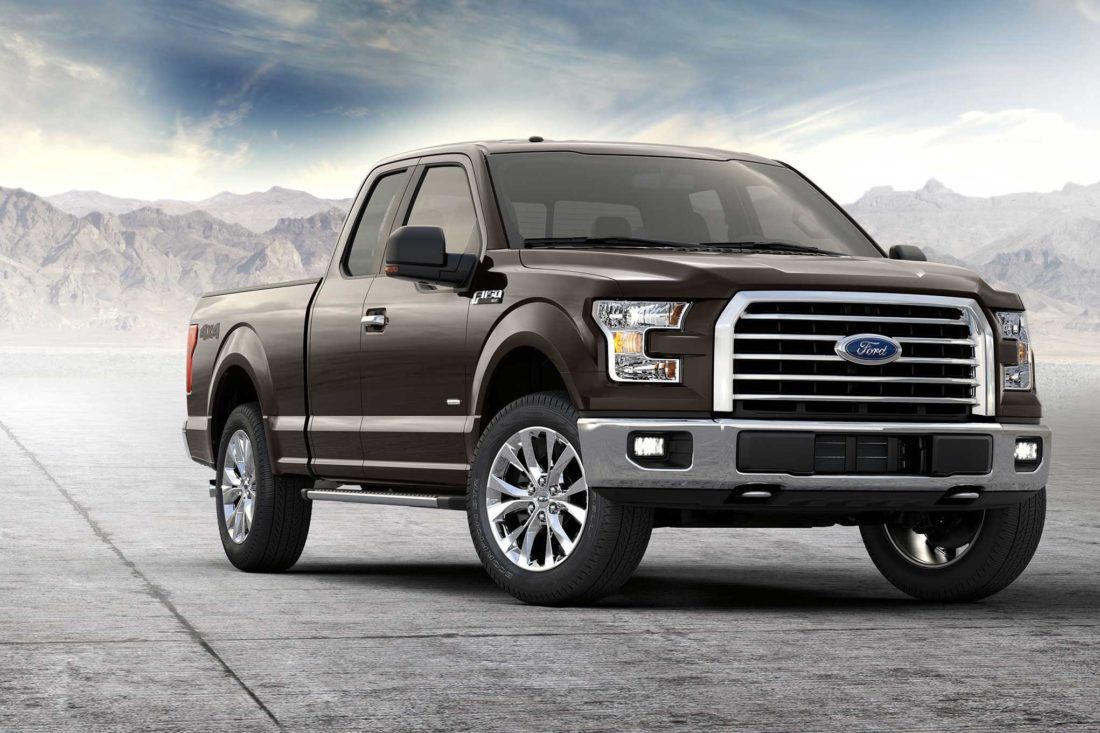
7. **Ford Torino GT: Mid-Size Muscle Makes Waves with Surging Value**For many years, the 1970 Ford Torino GT, particularly when armed with the formidable 429 Cobra Jet V8, navigated the automotive landscape with an almost puzzling obscurity. Despite once outselling the iconic Mustang, this mid-size marvel was, for various reasons, discontinued and subsequently faded into relative anonymity. However, that era of oversight is rapidly drawing to a close, as the Torino GT’s compelling blend of substantial size, raw power, and thrilling performance is now undeniably capturing the attention and imagination of a new generation of collectors. This car, once a quiet giant, is finally roaring back into the spotlight.
The market’s enthusiastic embrace of the Torino GT is vividly reflected in its current financial performance. Data from Classic.com paints a clear picture of its surging desirability, reporting that average sales prices have impressively risen from $33,000 in 2020 to a robust $53,000 in today’s market. This substantial increase underscores a powerful shift in collector preference, with high auction prices further cementing its newfound status. It’s no longer merely a forgotten relic; instead, the Torino GT is undergoing a profound transformation, steadily evolving into a highly sought-after collector’s piece that truly celebrates a pivotal, yet often understated, chapter in Ford’s illustrious muscle car legacy.
This remarkable appreciation is a testament to the fact that genuine performance and distinctive styling will always find their audience. The Torino GT, with its muscular lines and potent powertrain, offers enthusiasts a compelling package that stands proudly alongside its more famous brethren. As more collectors recognize its historical significance and inherent capabilities, the Torino GT is proving itself to be a shrewd investment, offering not just the thrill of classic American muscle, but also the satisfaction of unearthing a truly underrated automotive treasure. It’s a car that, by every measure, is now worth every penny.
Car Model Information: 2021 Dodge Challenger R/T Scat Pack
Aka: Ford Fairlane (Venezuela)
Name: Ford Torino
Caption: 1970 Ford Torino Cobra SportsRoof
Manufacturer: Ford Motor Company
Production: 1968–1976
Class: Mid-size car,muscle car
Layout: FR layout
Related: Mercury Montego
Assembly: ubl
Predecessor: Ford Fairlane (Americas)
Successor: Ford LTD II
Categories: 1960s cars, 1970s cars, All Wikipedia articles written in American English, All articles with vague or ambiguous time, Articles with short description
Summary: The Ford Torino is an automobile that was produced by Ford for the North American market between 1968 and 1976. It was a competitor in the intermediate market segment and essentially a twin to the Mercury Montego line.
Just as the Ford LTD had been the upscale version of the Ford Galaxie, the Torino was initially an upscale variation of the intermediate-sized Ford Fairlane. In the 1968 and 1969 model years, the intermediate Ford line consisted of lower-trim Fairlanes and its subseries, the upper-trim Torino models. In 1970, Torino became the primary name for Ford’s intermediate, and the Fairlane was now a subseries of the Torino. In 1971, the Fairlane name was dropped altogether, and all Ford intermediates were called Torino.
Most Torinos were conventional cars, and generally the most popular models were the four-door sedans and two-door hardtops. However, Ford produced some high-performance “muscle car” versions of the Torino by fitting them with large powerful engines, such as the 428 cu in (7.0 L) and 429 cu in (7.0 L) “Cobra-Jet” engines. Ford also chose the Torino as the base for its NASCAR entrants, and it has a successful racing heritage.
Get more information about: Ford Torino
Buying a high-performing used car >>>
Brand: Ford Model: Torino GT
Price: $37,986 Mileage: 20,124 mi.

8. **Buick GSX Stage 1: Performance Meets Sophistication and Skyrockets in Value**Prepare to be amazed by the 1970 Buick GSX Stage 1, a muscle car that effortlessly marries brute force with an unexpected level of refinement and sophistication. Beneath its dramatic Apollo White or Saturn Yellow finish, typically adorned with striking black race stripes, lies a monumental 455-cubic-inch V8 engine, a true titan that delivers an earth-shattering 510 lb-ft of torque. This beast was unequivocally built to compete with the very best of its era, yet for many years, it inexplicably flew under the radar, overshadowed by its flashier, perhaps less nuanced, rivals.
However, the days of the GSX Stage 1 being an under-the-radar performer are decidedly over. Its market values are climbing with remarkable vigor, signaling a profound re-evaluation of its stature. ‘Good’ condition examples have seen a noteworthy appreciation of 13.2%, while top-condition models are experiencing an even more impressive climb, appreciating by a staggering 15.7%. Furthermore, auction averages for this magnificent machine have jumped substantially, soaring from approximately $100,000 in 2020 to now command over $136,000 today. These figures speak volumes about its rapidly growing appeal among serious collectors and enthusiasts.
The GSX Stage 1’s unique combination of undeniable rarity, an air of luxury, and untamed raw power is finally being acknowledged, cementing its well-deserved status as one of the era’s most profoundly underrated muscle cars. It offers a driving experience that’s both exhilarating and surprisingly comfortable, a dual nature that appeals to a sophisticated palate. For those seeking a classic that truly stands apart, embodying both savage speed and refined character, the Buick GSX Stage 1 is an undeniable triumph, a genuine hidden gem that promises both thrilling drives and a strong return on investment.
Car Model Information: 2023 GMC Sierra 1500 Denali
Name: Gran Sport
Logo: Buick gs emblem.png
Producttype: Performance car
Currentowner: General Motors
Producedby: General Motors
Introduced: [object Object]
Related: T-Type
Markets: U.S.
Categories: All Wikipedia articles in need of updating, All articles with unsourced statements, Articles with short description, Articles with unsourced statements from September 2020, Buick vehicles
Summary: The Gran Sport name has been used on several high-performance cars built by General Motors for its Buick brand since 1965. In the GM brands hierarchy, Buick was surpassed in luxury and comfort appointments only by Cadillac, which did not produce performance models. As a result, the Buick GS series were the most opulently equipped GM sport models of their era.
The Gran Sport performance enhancements on all Buick products during this era sought to affirm Buick’s tradition of producing powerful and comfortable products going back to the 1930s when all Buicks of the time were upgraded to the Buick Fireball Straight Eight, then installed the 278 cu in (4.6 L) Roadmaster engine in the shortest model Special and introduced the Century, known as “the banker’s hot rod” with a three speed synchromesh manual transmission. The Gran Sport sought to identify cars that were fun to drive with a luxury approach.
Get more information about: Buick Gran Sport
Buying a high-performing used car >>>
Brand: Buick Model: GSX Stage 1
Price: $44,488 Mileage: 99,168 mi.

9. **Dodge Coronet R/T Convertible: A Mopar Sleeper Awakens with Explosive Growth**Among the pantheon of powerful Mopar models, the 1970 Dodge Coronet R/T Convertible has long held the distinguished, if somewhat quiet, title of a true sleeper. This utterly potent yet historically underappreciated convertible is now experiencing nothing short of major value growth, turning heads and opening wallets in the collector community. Equipped with the legendary 440 Six-Pack engine, a marvel of engineering that churned out an incredible 390 horsepower, this particular Coronet R/T was unequivocally built for serious, uncompromised performance, ready to dominate both the street and the strip.
The market’s response to this Mopar beast has been nothing short of spectacular. In recent years, the average sale prices for the Coronet R/T Convertible have dramatically doubled, soaring from approximately $50,000 to an impressive $100,000. This is a monumental leap that few other classics can boast. Digging deeper into the data, Hagerty reports an impressive 15.2% increase for ‘Excellent’ condition cars, and an even more remarkable 30% increase for ‘Concours’ models, demonstrating an undeniable trend of escalating desirability. These figures emphatically highlight the growing interest in rarer body styles, particularly convertibles, when they are paired with such high-output, iconic engines.
The Dodge Coronet R/T Convertible is rapidly shedding its sleeper status and fully embracing its new role as a prized collector’s item. Its blend of rarity, open-air exhilaration, and brute-force Mopar performance makes it an incredibly compelling acquisition. For collectors who understand the subtle nuances of the muscle car market and appreciate vehicles that offer both breathtaking power and a unique silhouette, this Coronet R/T represents not just an investment, but a tangible piece of automotive history that is now, quite deservedly, receiving its long-overdue moment in the sun.
Car Model Information: 2023 GMC Sierra 1500 Denali
Name: Dodge Coronet
Caption: 1967 Dodge Coronet R/T
Manufacturer: Dodge
Production: 1949–1959,1965–1976
Class: Full-size
Predecessor: Dodge Custom
Successor: Dodge Dart
Layout: FR layout
Categories: 1950s cars, 1970s cars, All articles with dead external links, All articles with unsourced statements, Articles with dead external links from June 2016
Summary: The Dodge Coronet is an automobile that was marketed by Dodge in seven generations, and shared nameplates with the same bodyshell with varying levels of equipment installed. Introduced as a full-size car in 1949, it was the division’s highest trim line and moved to the lowest level starting in 1955 through 1959. The name was reintroduced on intermediate-sized models from the 1965 until 1976 model years. Muscle car versions were available starting in 1965 with the 383 and 426 wedge cu in (7.0 L) Chrysler RB engine, followed in 1966 by the powerful 426 cu in (7.0 L) Chrysler Hemi. Other performance models included the “Superbee”, and featured, the 383 cu in (6.3 L) Magnum, among other engine options. The nameplate “coronet” is a type of crown worn by royalty.
In the 1980s, the Coronet was used on Dodge models marketed in Colombia.
Get more information about: Dodge Coronet
Buying a high-performing used car >>>
Brand: Dodge Model: Coronet R/T
Price: $44,488 Mileage: 99,168 mi.
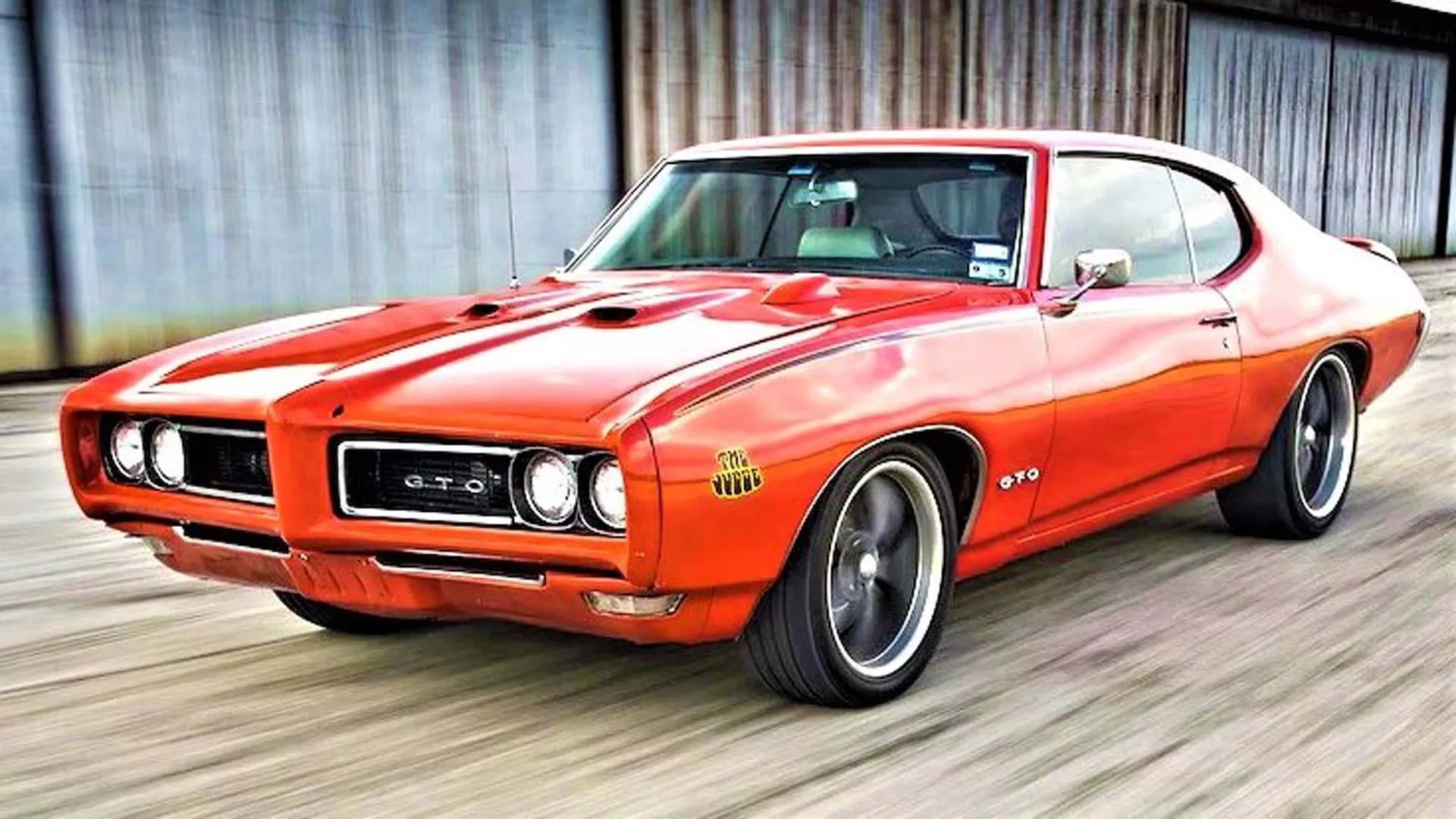
10. **Pontiac LeMans: The GTO’s Stylish Cousin, A Smart Investment for the Future**With the prices of its more famous sibling, the GTO, continuing their stratospheric ascent, savvy collectors are increasingly turning their discerning eyes towards the 1971 Pontiac LeMans. Positioned as a more affordable, yet similarly styled and performance-capable option, the LeMans is rapidly emerging as a remarkably intelligent choice for value-driven enthusiasts. It generously shares many of the iconic design cues and essential performance components with the GTO, making it an incredibly attractive alternative for those who covet vintage Pontiac flair without the prohibitive price tag that now accompanies its legendary counterpart.
The market data unequivocally supports this shift in collector sentiment. Classic.com reports a significant jump in average prices for the LeMans, which have soared from approximately $20,000 in 2020 to now confidently exceeding $30,000 today. Furthermore, auction peaks have been observed nearing an impressive $90,000, showcasing its potential for high-end sales. Hagerty’s detailed analyses further underscore its appeal, listing value increases of over 16% for models equipped with the potent 400- and 455-cubic-inch V8 engines in ‘Excellent’ condition. These numbers are a clear indicator of its robust and sustained market appreciation.
The Pontiac LeMans is not merely a substitute; it is carving out its own identity as a favorite among a younger demographic of enthusiasts who are keenly searching for genuine muscle car heritage that still offers substantial value. This model perfectly embodies the essence of value-driven muscle car collecting, demonstrating that you don’t always need the most expensive nameplate to own a thrilling, high-performing piece of automotive history. As the muscle car market continues its dynamic evolution, the LeMans stands tall as a compelling investment, celebrating classic performance while offering a truly accessible entry point into the world of collectible American iron.
Car Model Information: 1972 Pontiac LeMans
Caption: 1971 Pontiac LeMans Sport hardtop
Name: Pontiac LeMans
Manufacturer: Pontiac (automobile)
Production: 1961–1981 (U.S.),1971–1983 (Canada),1988–1993 (South Korea)
Class: Compact car
Successor: Pontiac 6000
Categories: 1970s cars, 1980s cars, All Wikipedia articles needing clarification, All articles with unsourced statements, Articles with short description
Summary: The Pontiac LeMans is a model name applied to automobiles marketed by Pontiac. The name came from the French city of Le Mans, the site of the 24 Hours of Le Mans, the world’s oldest active sports car endurance race that was first held in 1923. Originally a trim upgrade package based on the Tempest, the LeMans became a separate model in 1963.
In its first five generations spanning from 1961 until 1981 (1983 in Canada), the LeMans was a domestic RWD car; the first generation was a compact, with Gens 2-5 intermediates. From 1988 through 1993 the LeMans name was resurrected for a sixth generation, a FWD subcompact badge-engineered version of the Daewoo LeMans manufactured by Daewoo in South Korea.
Pontiac produced some notable GT/performance versions in the RWD models. The 1st generation not only featured a front-engine/rear-transaxle that very nearly resulted in an ideal 50/50 weight distribution, but also included four-wheel independent suspension for nimble handling, and could be ordered with an optional Buick 215 aluminum V8 engine.
The Pontiac GTO is credited with popularizing the muscle car market segment of the 1960s, and by many as the first muscle car. The 1970 model year introduced the LeMans GT-37 package. The 1973-75 Grand Am and 1977 Can Am combined luxury with performance features to emulate European coupes, focusing on balancing handling with power.
Get more information about: Pontiac LeMans
Buying a high-performing used car >>>
Brand: Pontiac Model: LeMans
Price: $46,000 Mileage: 17,000 mi.
As our exhilarating journey through these ten underappreciated classic muscle cars draws to a close, it’s abundantly clear that the roar of the V8 and the allure of raw American power remain as potent as ever. While the undisputed titans like the Chevelle SS and GTO Judge will forever hold their place in automotive legend, a vibrant new generation of collectors is now eagerly unearthing and celebrating the distinct charm and formidable performance of these lesser-known alternatives. The dynamic shifts within the market prove that genuine muscle car heritage isn’t confined to a select few; it’s a sprawling, rich landscape full of surprises and opportunities. For discerning enthusiasts and astute investors alike, the time is ripe to explore these rising stars – vehicles that not only honor a glorious past but also offer compelling future value in an ever-evolving, fiercely passionate automotive world. These aren’t just cars; they’re mobile investments, each with a unique story and an undeniable promise of thrill and appreciation.

